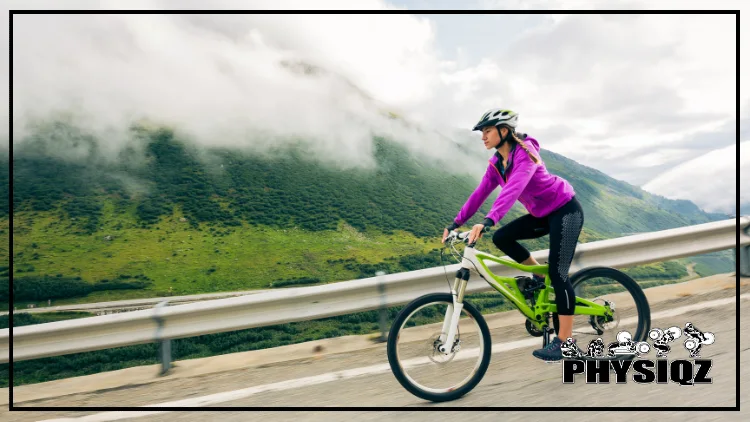
When working towards a cycling bum, before and after results in the matter of months may sound too good to be true, but cycling can truly make your backside more plump and advocates of spin classes such as SoulCycle, Cyclebar, and Peloton aren’t kidding when they say they’ve found out how to get a bigger butt.1
These before and after results are paired with real-life pictures in order to inspire anyone to get back on the bum sculpting saddle, or begin their butt toning journey.
In addition, we’ll cover muscles worked during cycling, why cycling is so good for building the glutes, tips to get the most out of your cycling sessions and a full list of auxiliary booty exercises.
Is Cycling Good for the Butt? Does Cycling Build a Bigger Booty?
Many fitness enthusiasts might wonder if cycling is good for the butt or if spinning tones your bum. Well, the answer to both is yes! Cycling can be great for the butt, and here’s why.
Regular cycling can help riders to tone and strengthen their muscles, including the buttocks, the thighs, the core, and the calves. Cycling can also help to boost metabolism and burn calories, which can contribute to weight loss and fat burning.
It is important for cyclists to remember that the benefits of cycling can depend on a variety of factors, such as the intensity and duration of the ride or class, as well as the individual’s starting fitness level.
How Does a Bike Exercise Tone Your Bum?
Biking can help tone the butt through a number of ways!
First, cycling burns a good amount of calories. This in turns helps the body to burn fat for energy, leading to a drop in body fat percentage.
Cycling also contributes to muscle hardening, commonly referred to as muscle toning, achieved through muscular hypertrophy. This simply means that the muscles engaged in biking will increase in size and strength but cycling usually isn’t’ enough to cause any sort of bulk – point being, look at professional female cyclers legs and bums – they’re built, but not bulky.
More muscle will in turn boost the body’s metabolism, causing the body to burn even more calories. In the long term this can lead to a significant amount of fat loss.
Through the loss of fat and increased muscle, the lower body and core will have a more toned appearance. This is particularly true for the muscles of the butt, or the glutes, which are the primary target of cycling.
Furthermore, weight and fat loss will cause the waist to look smaller as a result. This further increases the appearance of a lean and strong bottom achieved through biking.
Cycling Bum Before & After Pictures (1 Month Exercise Bike Results)
Consistent use of cycling can make a huge difference, especially when it comes to the glute muscles of the buttocks. But more importantly, consistent exercise can even improve mental and physical health in a number of ways.2
Check out these before and after photos of those who stayed consistent during their bike based fitness journey. The results from this one-month exercise bike program are astonishing, demonstrating that consistent effort yields significant rewards!
Elena’s Cycling Butt Transformation
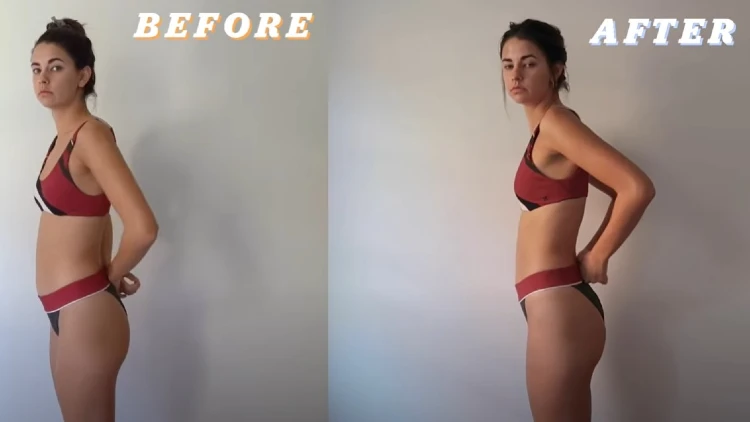
Elena’s inspiring 30-day journey with Soul Cycle resulted in an amazing transformation, particularly in her butt. Source: Elena Taber on Youtube3
Elena set off to document her 30 days of sole cycle and had incredible results to show for it. Throughout her 30-day weight loss challenge, she participated in a minimum of four spin classes per week over the span of four weeks.
On her youtube channel, she discusses the pros and cons of a spin program like soul cycle. She also bravely opens up about her difficulty with body image and is an inspiration to all struggling with body dysmorphia.
Check out her full results and journey in the video below, and note how much more toned and healthy her legs look as a result!
Lexi’s Cycling Bum Results With Pictures

Lexi’s dedication and hard work, Lexi lost 7.4 lbs. Source: Everything With Lexi on Youtube
Lexi has a youtube channel in which she is documenting her weight loss journey. She has a goal of losing 100 lbs and maintaining an overall healthy lifestyle.
To help achieve her goals, Lexi opted for a two-month Peloton biking challenge, selecting one of the best Peloton classes for weight loss.
She reports completing 62 classes over a two month period for a grand total of 7.4 lbs lost. In her video she also includes some of her favorite instructors for those who want to try this challenge at home.
Liz’s Booty Gains From Cycling
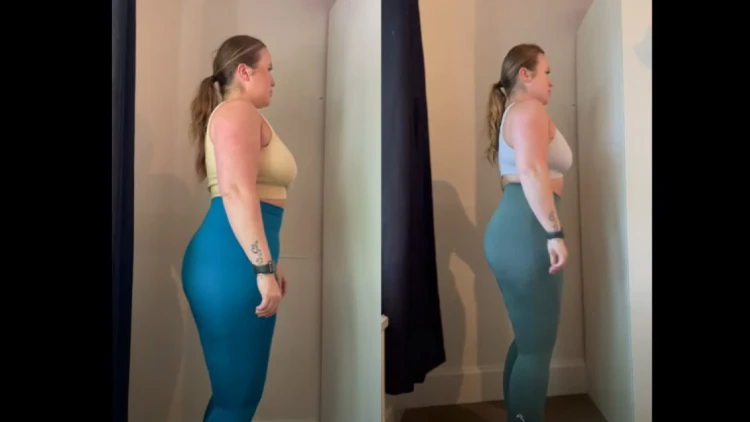
Liz’s hard work paid off with noticeable improvements in her lifted and toned buttocks and thighs, and a more defined waistline. Source: Fitwithliz on Youtube4
Liz set off with a goal to cycle everyday for two weeks straight, and had great results to show off. During this time she cycled a minimum of 5 kilometers per day!
On her youtube channel, Liz shares her thoughts throughout her progress and even documented what she ate. She prides herself in showing unedited, real results that’s feasible for anyone with access to a bike to do.
Keep in mind that 14 days is a short time for a transformation, but she has a transformation nonetheless. Notice that her buttocks and thighs appear much more lifted and toned, and her waist is more defined as a result of her hard work.
What Muscles Does Cycling Work?
Bikers might find themselves wondering what muscles work when doing stationary biking.
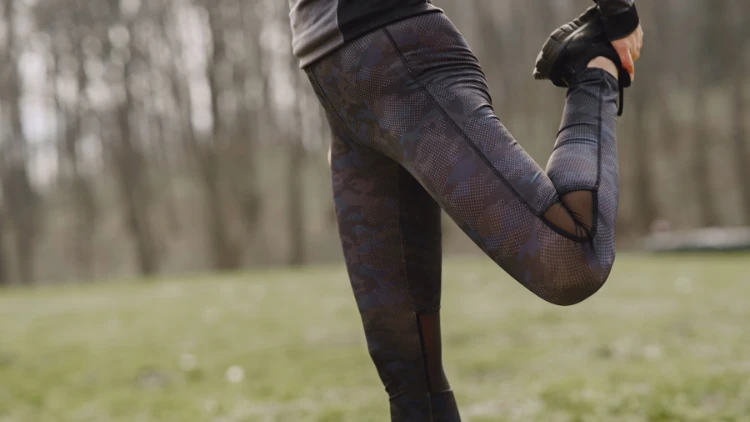
Source: Gustavo Fring from Pexels5
Well, the answer is that cycling can work a number of different muscles, including the muscles of the buttocks, thighs, and calves.6 This makes it a great workout to incorporate for weight loss and toning. Check out the complete list below for an in depth analysis of what muscles biking works.
The Butt Muscles (Gluteus Maximus, Medius, & Minimus)
In this day and age, everyone wants to build their butt and making a personal mission to obtain a cycling bum before and after transformation is quite common.
Thus, people wanting a bigger rump often ask if biking makes the butt bigger. Indeed, it does!
Biking engages all three different glute muscles that form what is commonly referred to as the buttocks. These muscles are located in the posterior region and are the primary targets when it comes to outdoor biking and indoor spin class, leading to the appearance of a bigger butt.
In fact, when it comes to cycle bum before and after results, the glutes or butt muscles are the main focus.
Maximus
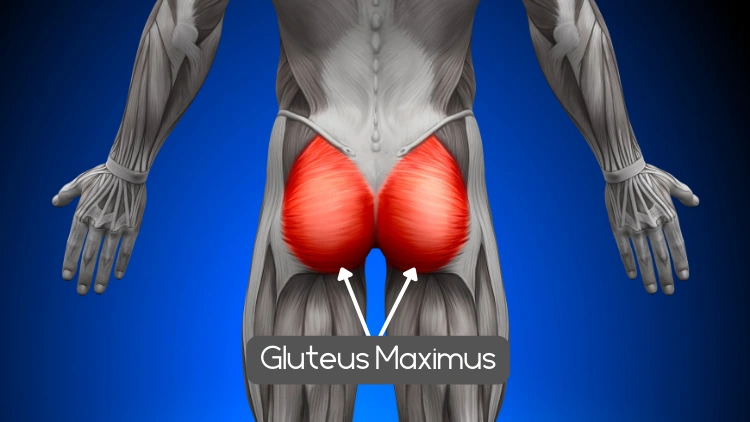
Source: decade3d via Canva.com7
Medius
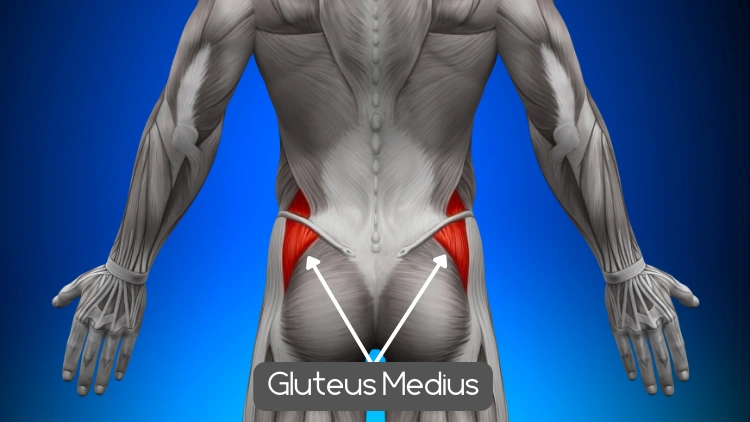
Source: decade3d via Canva.com8
Minimus
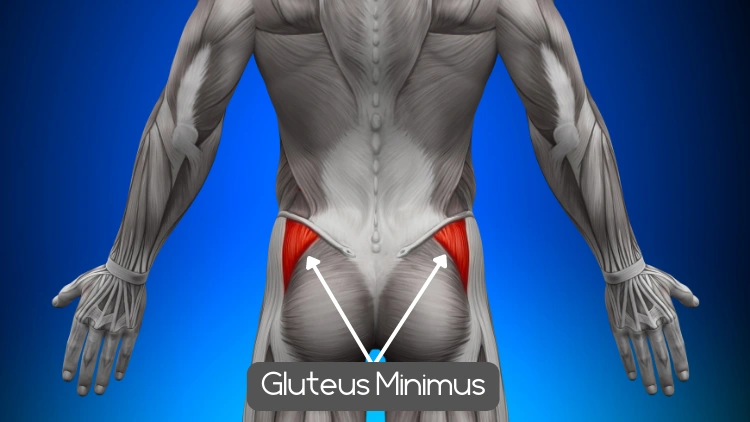
Source: decade3d via Canva.com8
The Upper Leg & Thigh (Quadriceps)
Much like the glute muscles discussed above, the quadriceps or “quads” are also targeted during cycling related exercise. Building the quads can be challenging, as they are among the hardest muscles to develop. Biking is an excellent way to include quad-engaging cardio for thigh building and toning.

Source: janulla via Canva.com9
The Backside of the Thigh (Hamstrings)
The hamstrings or commonly referred to hammies are the muscles located on the backside of the thigh. They’re responsible for bending the knee, which means they are constantly being worked during cycle classes.
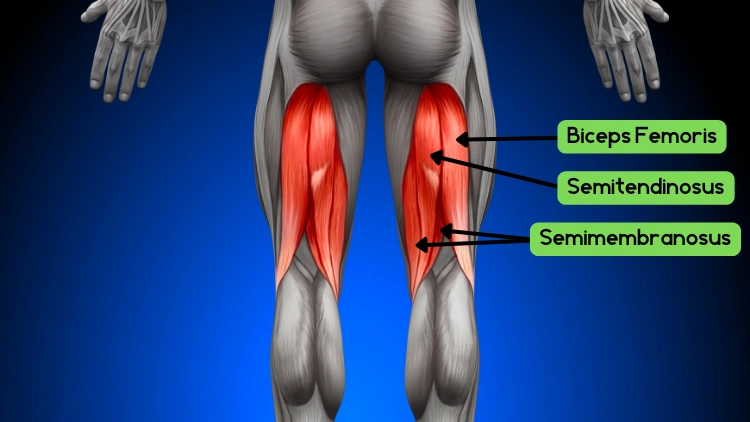
Source: decade3d via Canva.com10
The Calves (Gastrocnemius & Soleus)
The gastrocnemius and soleus are the fancy name of the two muscles that are more commonly referred to as the calves. They help to engage the foot in flexion and extension, and due to the pedaling motion during cycling routines, are constantly engaged.
Gastrocnemius
Soleus
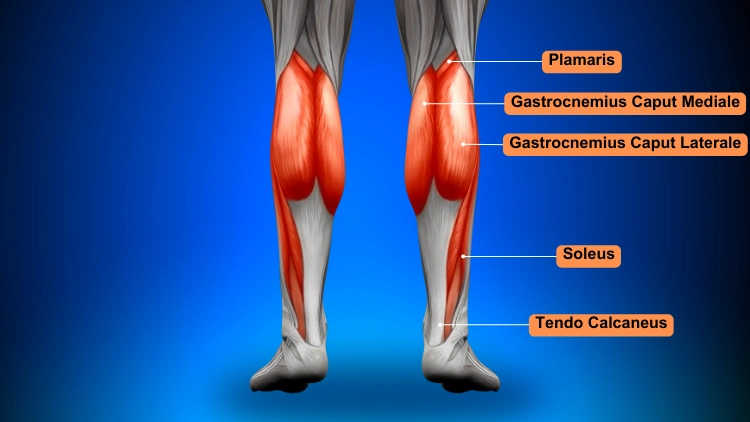
Source: decade3d via Canva.com11
The Abs & Lats or Core (Abdominals & Latissimus Dorsi)
Many people consider outdoor biking or cycling classes to only engage the lower body, but that’s not exactly true. Cycling can also create a considerable amount of work for the abdominals and back muscles that form the core of the body.
When biking, it’s important to keep a tight core and engage the abs and lats muscles. These muscles are responsible for keeping a rider upright and in an ergonomic position on the bike.
Abdominals
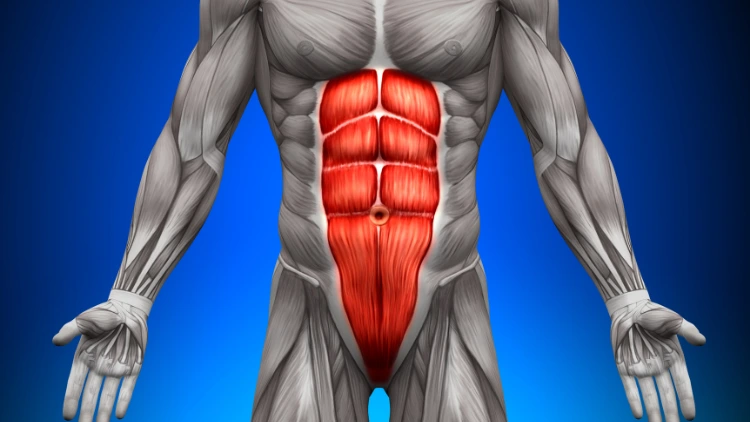
Source: decade3d via Canva.com12
Lats
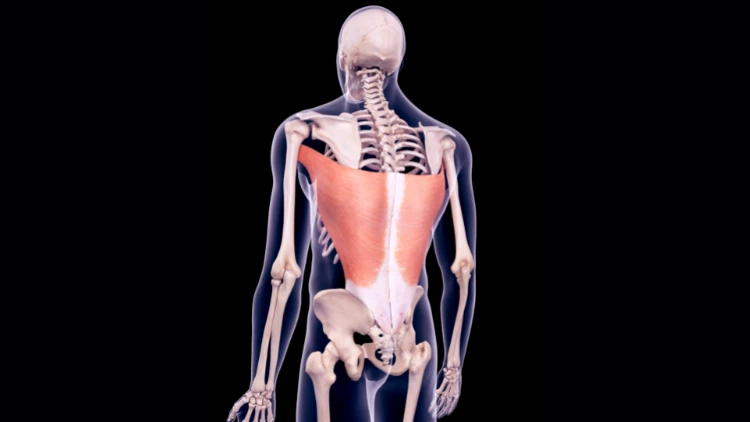
Source: Science Photo Library via Canva.com13
The Chest, Shoulder, & Upper Arm Muscles (Pecs, Delts, Biceps, & Triceps)
As a rule of thumb, the muscles engaged while biking will be focused on the core and lower body. However, there are some cycling classes that use weight and movement to engage the chest, upper arm, and shoulder muscles.
Classes like this are ideal for those who are wanting to tone the upper body while doing cardio. Research also suggests that changing the saddle position can help target the triceps vs biceps, depending on the setting.14
Pecs
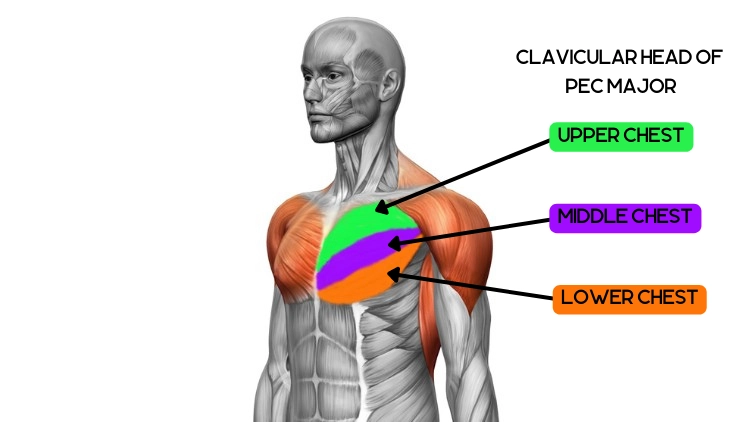
Source: Science Photo Library via Canva.com15
Delts
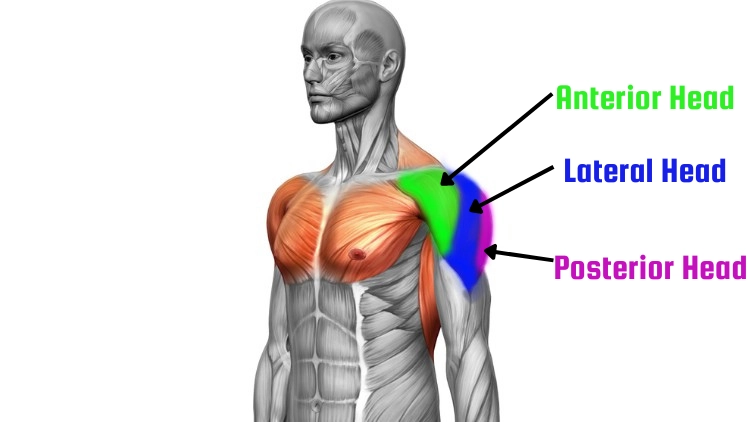
Source: Science Photo Library via Canva.com15
Biceps
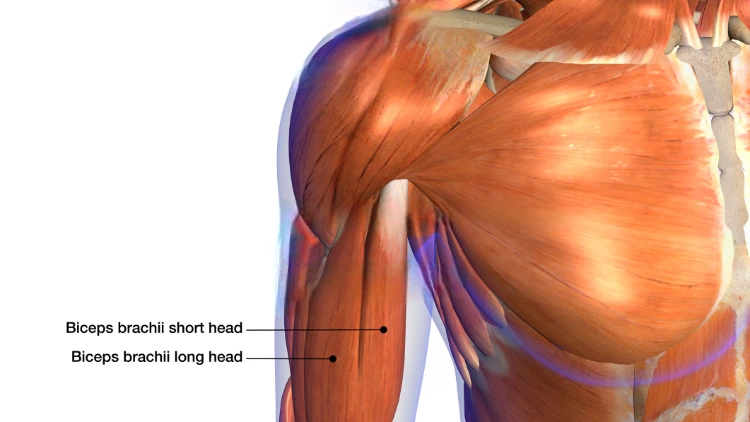
Source: Hank Grebe via Canva.com16
Triceps
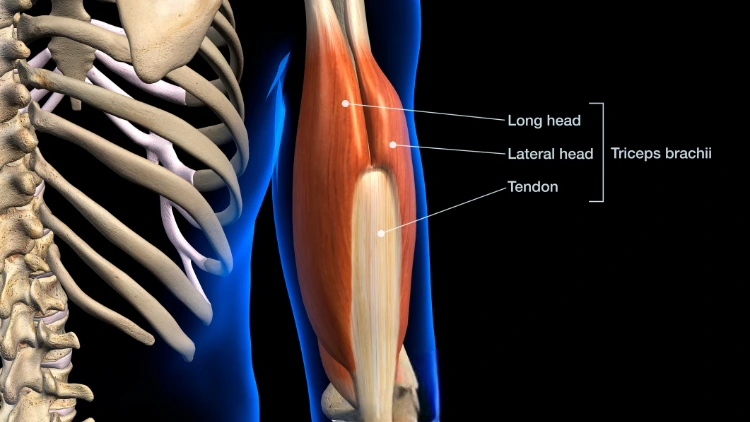
Source: Hank Grebe via Canva.com17
Tips on How To Make Your Butt Bigger & Achieve a Cycling Booty
There are many ways to get a bigger butt when it comes to cycling.
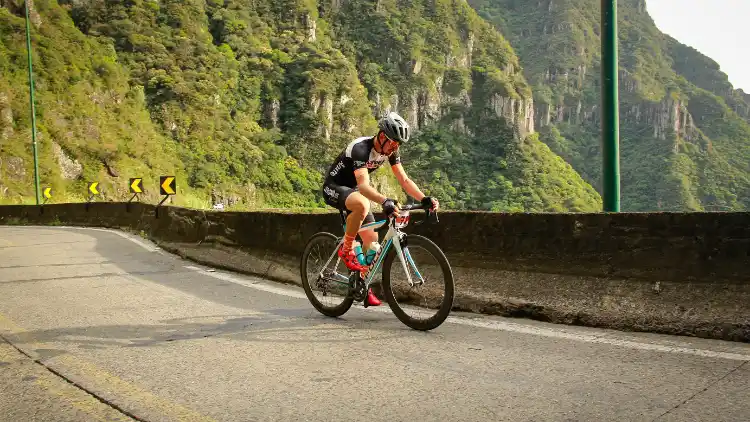
Source: Matheus Wladeka from Pexels18
Starting with a spin program like the Peloton workout plan is an excellent way to begin, or you can incorporate the techniques discussed below to enhance your cycling booty results.
Up the Intensity for a Bigger Bum
There are many ways to up the intensity to help obtain a bigger cycling bum.
For instance, try increasing the resistance during a ride. This is done through using a higher gear or adding weight to the bike.
Another way to increase intensity is to use hills. This will make the workout more difficult and lead to more calories being burned.
If biking outside, a person can simply use a path route with some incline. Or if using a stationary bike, a rider can simply adjust the resistance to simulate hill climbing.
Furthermore, a rider can always increase the length of the workout. The results from cycling 1 hour a day for weight loss can be remarkable, resulting in a slimmer waist and a more pronounced buttocks.
Increase the Frequency To Get Bigger Glutes
Riders can ride more often to help achieve a bigger buttocks. In theory, the more often a muscle group is worked out, the more strength and size the muscle should build.
But be careful! Muscles also need time to rest in order to recover.
Riders should be aware of fatigue including symptoms such as prolonged muscle soreness and increased tiredness. If fatigue happens, take an extra day or two off for extra rest for the body.
Dieting To Build a Bigger Cyclist Butt
In order to maximize muscle growth and decrease body fat, a biker should try to get an adequate amount of protein. Protein is key for muscular hypertrophy, or more simply put, increasing muscle size, strength and tone-ness.19
For riders aiming to build a larger buttocks through cycling, following protein shakes diet plans could help ensure they meet their protein requirements.
Furthermore, weight loss will help to create the appearance of a bigger butt.
This will help to decrease the amount of body fat one has, creating a smaller and toned looking waist. As a result, the muscles of the butt will be more visible and will appear to look larger.
Stay Consistent to Achieve Your Own Cycling Bum Results
Bikers should keep in mind that when it comes to health, fitness, and weight loss, consistency is key.
Remember the before and after photo results of cycling bums discussed above; they all were done over a period of time with consistent riding. The longer the adherence to a workout program, the better the results tend to be.
Non-Cycling Exercises To Get a Larger Butt
When you’re looking to add even more size to the buttocks, try incorporating any of the exercises below to target the glute muscles, otherwise known as the muscles of the buttocks.
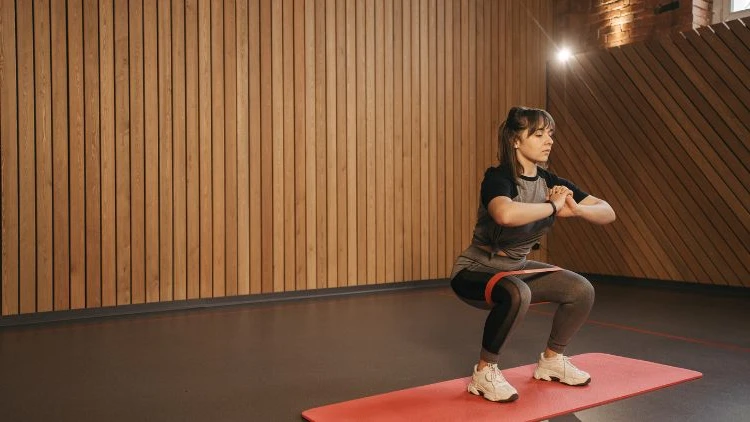
Source: Pavel Danilyuk from Pexels20
These are guaranteed to help build muscle size and strength, and can easily fit into any workout routine.
Squats
Squats are one of the best exercises for building the glutes. They target all three gluteal muscles, in addition to the muscles of the thighs too.
There are several squat variations that target different muscle groups, but the back squat is particularly popular for enhancing overall strength and increasing the size of the gluteal muscles.
Furthermore, squatting has additional benefits such as being a compound movement meaning it involves multiple joints. This leads to improved stability and balance outcomes while targeting multiple muscle groups at once.
Compound movement has also been shown by research to significantly increase muscle strength, making exercises like squats and hip thrusts ideal for glute building.21
Start with feet hip-width apart with the squat bar placed across the shoulders, traps, and back of neck. Bend the knees until the thighs are about parallel to the floor.
Make sure the weight is in the heels and the chest remains facing outward. Finally, stand back up to the starting position, and repeat for the number of reps desired.
Hip Thrusts
Hip thrusts are ideal for those wanting to build the glutes because it targets nearly all of the muscles surrounding the hips, and it can also help to improve posture and hip flexibility.
To perform a hip thrust, simply sit on the ground with the upper back resting against a bench. Next, place a weighted barbell or dumbbell across the hips.
The knees should be bent at 90 degrees. To complete a rep, simply push through the heels to raise the hips into the air.
Lifters will then slowly lower their hips back to the starting position and then repeat for the amount of reps required.
Step Ups
Step ups can be completed with body weight or dumbbells for more intensity. They are great for targeting the muscles of the glute, as well as the quads and hammies located in the thigh.
Due to the dynamic movement involved, this exercise will help to improve overall balance and coordination while building these muscles.
To complete this exercise, a person should place one foot on an elevated surface such as a bench and simply step up onto the surface to lift the body upwards. Next, step back down with the same leg and then repeat these actions with the other leg.
Stair Stepper
The stair stepper is a great cardiovascular exercise that also targets the muscles of the glutes. It is similar to the step up exercise and targets the same muscles, but requires continual stepping requiring an element of cardio too.
It’s a great add on to the exercises above to really hit the glutes.
Biking can be used to lose weight and build muscle. It’s great for overall health as well as the appearance of the bum, as proven by the incredible cycling bum before and after results in this article.
Frequently Asked Questions
How Often Can You Cycle?
It depends! For those who are also following a weight lifting program, limiting cycling to a few times per week can be a great way to get cardio while also allowing the body time to recover.
However, if cycling is the main form of exercise, a person can engage in this activity most days of the week. Research suggests that muscle weakness can occur on day three of consecutive exercise, so make sure to allow the body to rest to prevent injury or fatigue.
Does Cycling Tone Your Legs?
Cycling is not only a great cardiovascular workout. It’s also great for toning the muscles of the legs!
This is achieved from both building muscle and burning fat. Cycling creates the appearance of a lean bottom and legs because the muscles grow while body fat percentage drops, making the glutes more visible.
Does an Exercise Bike Tone Your Stomach?
Because cycling engages the core, an exercise bike can be used to tone the stomach making the abdominals more visible. Not only does it strengthen the core muscles, but also helps to decrease the amount of body fat, further contributing to the highly coveted toned look.
Does Cycling Make Your Bum Flat?
Considering the cycling before and after results discussed above, the answer to this question is no! Cycling does not make the bum flat.
What Are Cycling Glutes or a Biking Booty?
Cycling glutes or a biking booty is a term used to describe the type of butt that is achieved through regular cycling as an exercise. Because biking engages the butt muscles so well that it can create a great looking bum.
References
1nullplus. “Young Woman Cycling.” Canva. Accessed 15 April 2023. <https://www.canva.com/photos/MAEE4avsic0-young-woman-cycling/>
2Harvard T. H. Chan School of Public Health. 2022. Staying Active. Harvard. Web. Retrieved on 20 December 2022. <https://www.hsph.harvard.edu/nutritionsource/staying-active/>
3Elena Taber. “I Tried Soul Cycle For 30 Days & This Is What Happened!” YouTube, 22 November 2019, Accessed 31 March 2023. <https://youtu.be/O8c8QjapxWo>
4Fitwithliz. “Cycling EVERY DAY for 14 DAYS | My realistic RESULTS *WOW* BODY UPDATE.” YouTube, 20 September 2021, Accessed 31 March 2023. <https://youtu.be/YBoEpPVbpqQ>
5Gustavo Fring. “Crop sportswoman stretching legs in park.” Canva. Accessed 15 April 2023. <https://www.canva.com/photos/MAD-YPS1vLg-crop-sportswoman-stretching-legs-in-park/>
6Ericson, M. O., Nisell, R., Arborelius, U. P., & Ekholm, J. (1985). Muscular activity during ergometer cycling. Scandinavian journal of rehabilitation medicine, 17(2), 53–61. <https://pubmed.ncbi.nlm.nih.gov/4023660/>
7decade3d. “Gluteus Maximus – Anatomy Muscles.” Canva. Accessed 12 April 2023. <https://www.canva.com/photos/MADerAJvWMU-gluteus-maximus-anatomy-muscles/>
8decade3d. “Glutes Medius – Anatomy Muscles.” Canva. Accessed 12 April 2023. <https://www.canva.com/photos/MAC_U4VEw9o-glutes-medius-anatomy-muscles/>
9“Quadriceps Female Anatomy – Photos by Canva.” Canva. Accessed 20 Apr. 2023. <https://www.canva.com/photos/MADE-Sq7uLk-quadriceps-female-anatomy/>
10decade3d. “Hamstrings – Anatomy Muscles.” Canva. Accessed 15 April 2023. <https://www.canva.com/photos/MADerMxdfBI-hamstrings-anatomy-muscles/>
11decade3d. “Calves – Anatomy Muscles.” Canva. Accessed 14 April 2023. <https://www.canva.com/photos/MAC_U2yFahk-calves-anatomy-muscles/>
12decade3d. “Abs – Anatomy Muscles.” Canva. Accessed 12 April 2023. <https://www.canva.com/photos/MADerFwn3js-abs-anatomy-muscles/>
13Science Photo Library. “F017/1255.” Canva, 20 April 2019. Accessed 13 April 2023. <https://www.canva.com/photos/MADq3vbyn-k-f017-1255/>
14Brand, A., Sepp, T., Klöpfer-Krämer, I., Müßig, J. A., Kröger, I., Wackerle, H., & Augat, P. (2020). Upper Body Posture and Muscle Activation in Recreational Cyclists: Immediate Effects of Variable Cycling Setups. Research quarterly for exercise and sport, 91(2), 298–308. <https://doi.org/10.1080/02701367.2019.1665620>
15Science Photo Library. “The muscles involved in standing biceps curl. The stabilizing muscles are highlighted.” Canva. Accessed 12 April 2023. <https://www.canva.com/photos/MADmTGwAFbo-the-muscles-involved-in-standing-biceps-curl-the-stabilizing-muscles-are-highlighted-/>
16Hank Grebe. “Labeled Anatomy Chart of Neck and Shoulder Muscles on White Background.” Canva. Accessed 15 April 2023. <https://www.canva.com/photos/MADZASGJL7w-labeled-anatomy-chart-of-neck-and-shoulder-muscles-on-white-background/>
17Hank Grebe. “Labeled Anatomy Chart of Shoulder, Elbow and Triceps Muscles in Skeleton on Black Background.” Canva. Accessed 14 April 2023. <https://www.canva.com/photos/MAEJnzTxmJU-labeled-anatomy-chart-of-shoulder-elbow-and-triceps-muscles-in-skeleton-on-black-background/>
18Matheus Wladeka. “A Man Riding a Bike on the Road.” Canva. Accessed 15 April 2023. <https://www.canva.com/photos/MAETUw5s4JU-a-man-riding-a-bike-on-the-road/>
19Wu G. (2016). Dietary protein intake and human health. Food & function, 7(3), 1251–1265. <https://doi.org/10.1039/c5fo01530h>
20Pavel Danilyuk. “A Woman Doing the Squats with a Resistance Band.” Canva. Accessed 15 April 2023. <https://www.canva.com/photos/MAERzGefvIc-a-woman-doing-the-squats-with-a-resistance-band/>
21Paoli, A., Gentil, P., Moro, T., Marcolin, G., & Bianco, A. (2017). Resistance Training with Single vs. Multi-joint Exercises at Equal Total Load Volume: Effects on Body Composition, Cardiorespiratory Fitness, and Muscle Strength. Frontiers in physiology, 8, 1105. <https://doi.org/10.3389/fphys.2017.01105>